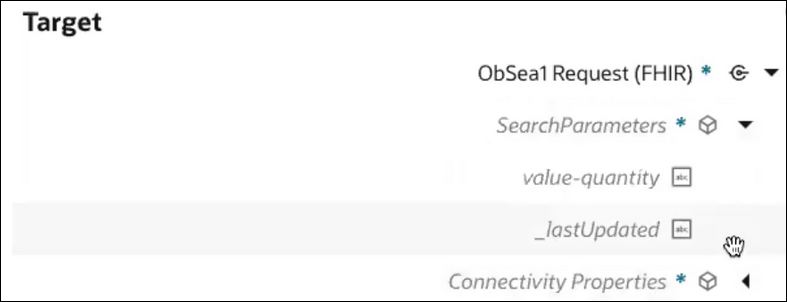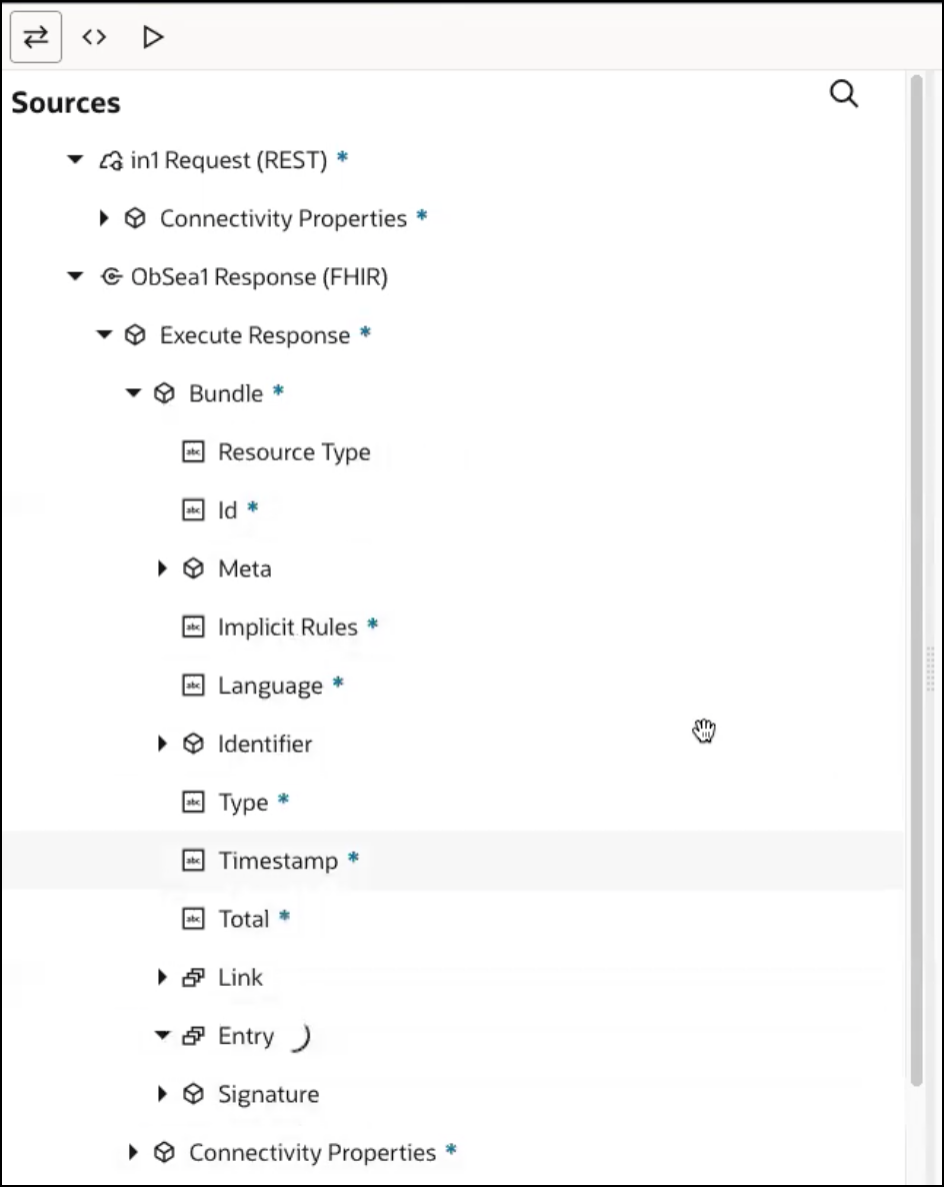Supported FHIR Capabilities
This section provides a conceptual overview of key FHIR capabilities supported by the FHIR Adapter.
FHIR
HL7 Fast Healthcare Interoperability Resources (FHIR) is a standard for accessing and exchanging healthcare data between different computer systems regardless of how it is stored in those systems. FHIR has the potential to improve patient care by providing clinicians and patients with timely access to information in a patient’s electronic health records. FHIR enables healthcare information, including clinical and administrative data, to be available securely to those who have a need to access it for the benefit of a patient receiving care.
See HL7 FHIR.
FHIR Standard Definition Support
The FHIR standard schema definition is a published set of XSDs that the FHIR standard organization uses to model healthcare resources such as patient, observation, and others. It provides an extension framework that allows different consumers to extend the model to support different attributes while still complying with the schema.
The standard schema definition is automatically selected for you when configuring the FHIR Adapter in the Adapter Endpoint Configuration Wizard. See Perform Actions on a FHIR Resource (Create, Read, Update, and more ...).
FHIR Profile Support
The HL7 FHIR standard defines a set of base resources (for example, patient and observation). The standard base resources have generic definitions. A FHIR profile enables you to create a customized resource definition by specifying a set of constraints and/or extensions on the base resource. Base FHIR resources such as a patient resource can express their conformance to a specific profile. This enables a FHIR server to validate a specific resource against the associated profile definition.
See Import FHIR Profile Packages in Using Oracle Integration for Healthcare in Oracle Integration 3 and Profiling FHIR.
FHIR Resources
FHIR divides healthcare data into categories such as patients, laboratory results, insurance claims, and many others. Each category is represented by a FHIR resource, which defines the details that comprise an exchangeable patient record. Resources satisfy most common healthcare patient use cases.
See Resource Index.
Oracle Integration supports a number of FHIR resources. You select a supported resource when configuring the FHIR Adapter in the Adapter Endpoint Configuration Wizard. See Perform Actions on a FHIR Resource (Create, Read, Update, and more ...).
FHIR Interactions
FHIR interactions are the set of actions to take on FHIR resources. Interactions can be grouped according to whether they act upon an instance, a type, or the whole system. FHIR supports interactions at the individual instance level (such as getting an individual resource, updating an individual resource, and deleting an individual resource) and interactions at the resource level (such as search and create).
- Create: Creates a new resource in a FHIR server-assigned
location.
See create.
- Delete: Removes an existing resource.
See delete.
- History: Retrieve the change history for a particular resource
type with an ID specified.
See history
- History-type: Retrieve the history for a particular resource
type.
See history
- Patch: Updates specific fields of a resource.
See patch.
- Read: Accesses the current contents of a resource.
See read.
- Update: Creates a new current version for an existing resource
or creates an initial version if no resource already exists for the given
ID.
See update.
- vread: Performs a version-specific read of a resource.
See vread.
You select the interaction to perform when configuring the FHIR Adapter in the Adapter Endpoint Configuration Wizard. See Invoke Basic Info Page and Perform Actions on a FHIR Resource (Create, Read, Update, and more ...).
Standard and Custom Request and Response Headers
FHIR provides a number of standard headers that control the way the FHIR server returns data. FHIR also specifies a syntax for defining custom headers.
See HTTP Headers and Custom Headers.
You can select standard headers and create custom request and response headers when configuring the FHIR Adapter in the Adapter Endpoint Configuration Wizard. See Perform Actions on a FHIR Resource (Create, Read, Update, and more ...).
Search Parameters
A filter parameter can be used with the search operation. Filter requests have access to the same set of search parameters that are available to the search operation in that resource context on the FHIR server.
See Filter Parameter and Search.
You can specify search parameters when configuring the FHIR Adapter in the Adapter Endpoint Configuration Wizard. See Perform Actions on a FHIR Resource (Create, Read, Update, and more ...).
Bundle Support
Search results are returned in a bundle, which is another resource within the FHIR standard definition. A bundle is a predefined container resource that can contain an array of entries of the same resources (homogenous set of resource instances) or different resources (heterogeneous mixture of resource instances).
The bundle creation for the case of search or other type of interactions that may use the bundle can be internal and does not need any user selection or configuration. The only selection that drives the overall schema creation is the resource selection.
The following example shows the response schema generated by the FHIR Adapter for a search result with a homogenous set of resource instances in the mapper.
- For the request, the search parameters in the mapper look as
follows:

- For the response, the bundle in the mapper looks as follows:
